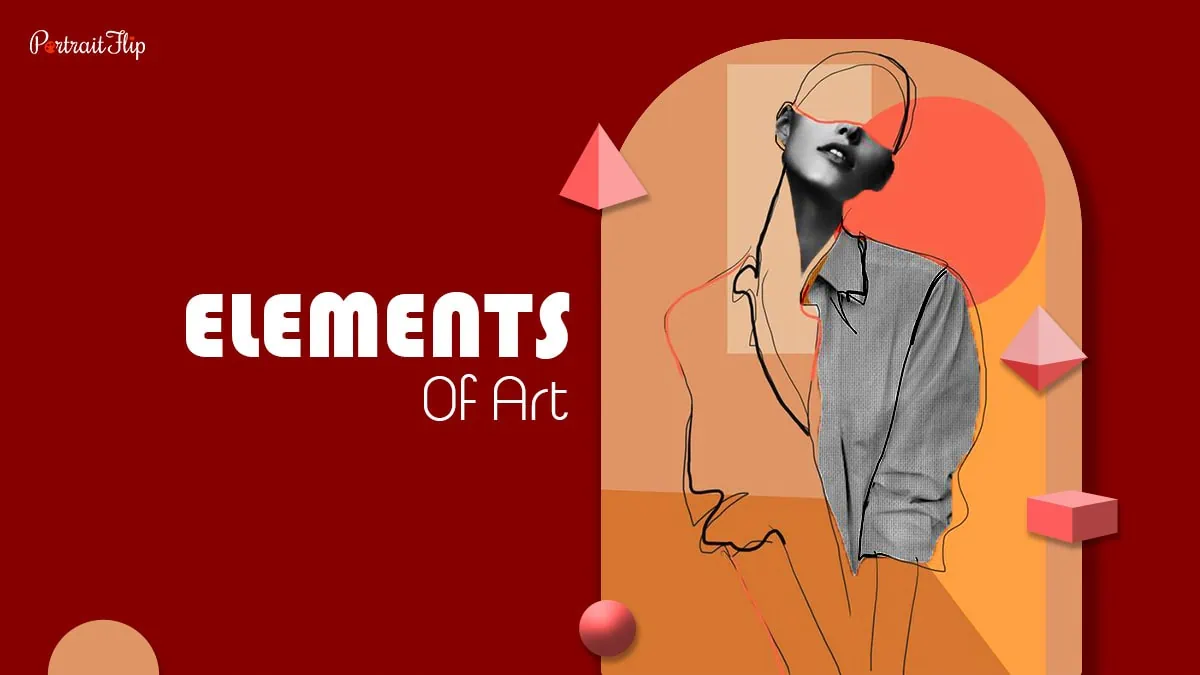Have you ever wondered why we find Mona Lisa’s smile mysterious? I mean, it’s just a lady who is posing for an artist.
Well, this is because of how Leonardo depicted each element in it.
Her smile, her hand posture, her body language—each detail tries to convey something unusual; it wouldn’t have been possible without the aid of art elements.
You heard me right. Elements of art!
Elements of art are a crucial ingredient in conceptualizing and crafting an artwork.
They have the power to ignite curiosity among viewers and make them wonder, “what exactly are we looking at?”
Elements of art are a subject that intrigues you with every step you take in exploring their various aspects.
With this thought, we’ll discover all the seven elements of art and learn how they add value to any piece, along with establishing a sense of completeness.
So, what are art elements?
Table of contents
Overview: What are Elements of Art?
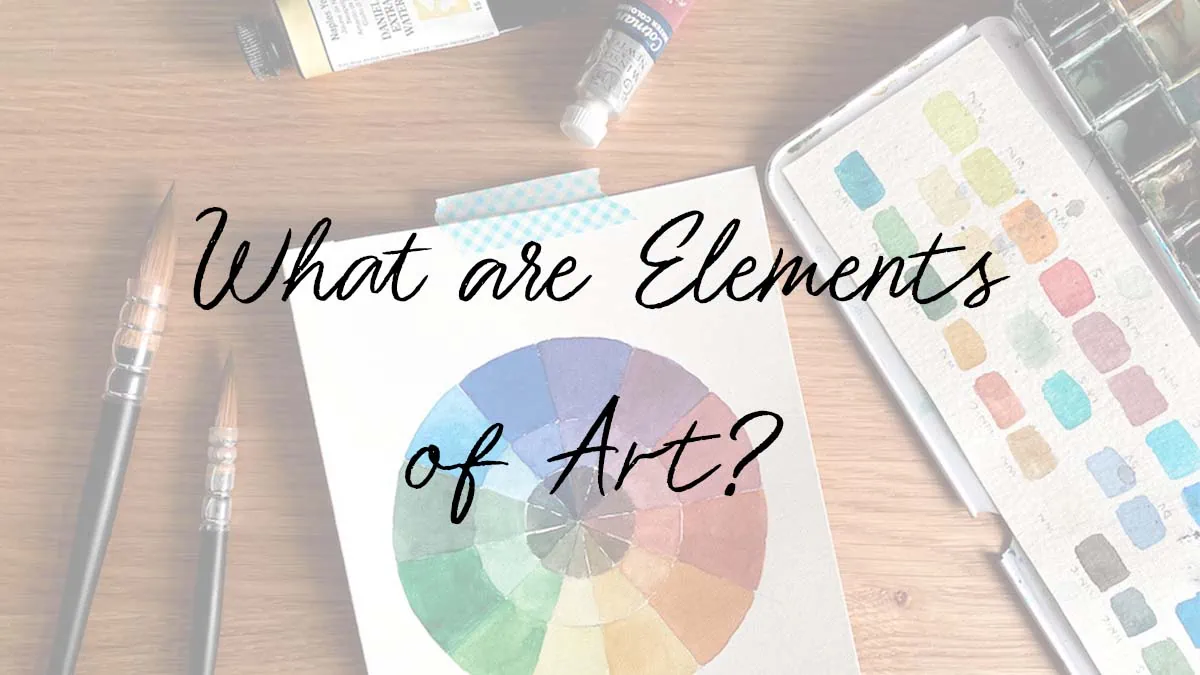
Elements of art are building blocks that help an artist create a piece and structure its components.
When you glance at any work of art, you’re not just looking at a subject but at seven members that are brought together in one place to complete the piece.
Those seven elements of art are:
- Line
- Shape
- Color
- Form
- Value
- Texture
- Space
Artists mix these factors and compose a new piece of art. But not every painting possesses all seven elements of art.
Not even any sculpture, sketch, or other kind of art can testify all seven art elements.
But, you know, a masterpiece can even be created.
An iconic piece of work can even be crafted with a mixture of two or three features. Well, it all depends on the artist’s thought process and efforts.
Why not learn the importance of each artistic element?
Exploring Seven Elements of Art (Examples Included)
By exploring all 7 art elements and knowing how they can enhance the structure, one can make an incredible piece of artwork.
Let’s dive deeper into the components of art.
1. Line in Art
Line is a key factor in art. No piece can ever be created without a line. It’s a must to have an art element in any composition.
Line is not restricted to just paintings; instead, if you even witness photographs, they have traces of lines that help in forming such pictures.
One popular example of the line can be “The Last Supper by Leonardo da Vinci.”

It’s a tapestry that was created to emphasize the main character, Jesus Christ.
Even his disciples are portrayed in a straight line, bringing all the attention to Christ.
Lines can be short, long, thin, or thick, depending on the quality and the perspective of the artist.
All together, there are 5 primary types of lines: horizontal, vertical, diagonal, zigzag, and curved.
To learn more, you can go through the line in art blog, which has discussed the subject thoroughly and in a detailed way.
2. Shape in Art
Shape in art elements? I guess we all know what shape is, but do you know that there are two kinds?
- Geometric shape
- Organic shape
Geometric shapes consist of circles, squares, triangles, and rectangles.
On the other hand, organic shapes are the objects that we see around us, such as butterflies, clouds, flowers, and more.
It is the basic foundation of the beautiful masterpieces we observe today.
What could be a better example than Kandinsky’s Composition 8?
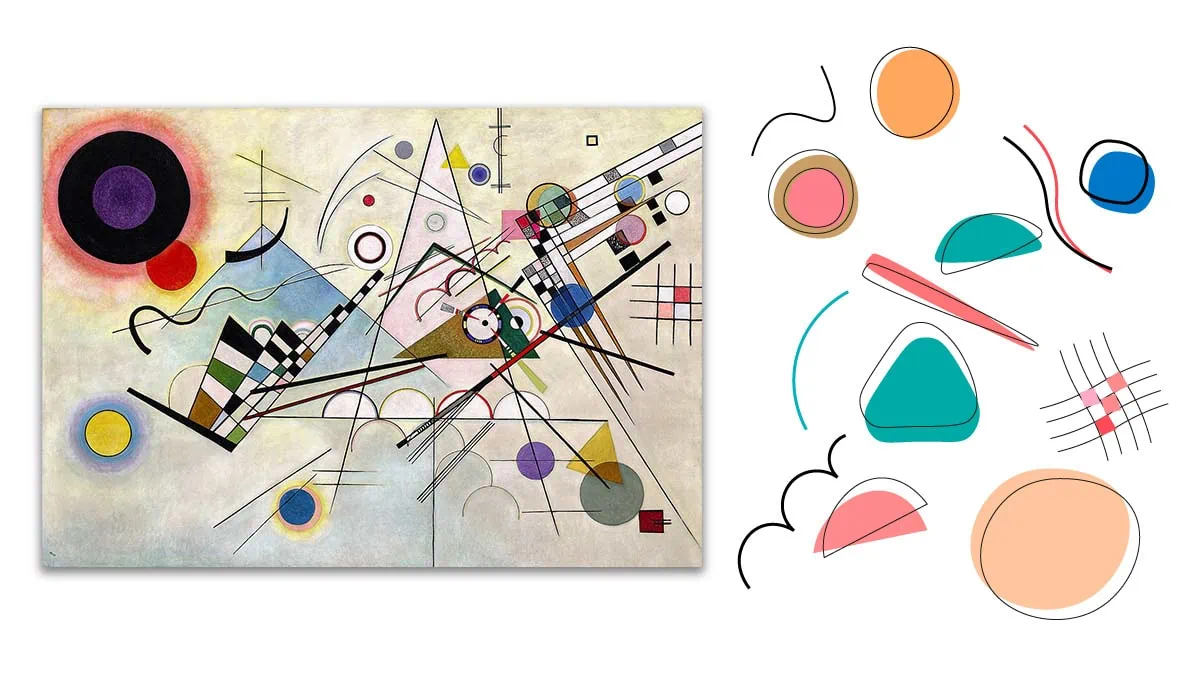
The painting depicts different shapes in a geometric form.
Read “Shape in Art,” which will help you gain a deeper understanding of the element.
3. Color in Art
Some say hue, some say tone, some refer to it as tint, and some call it shade.
Yes, I’m talking about a single element—color!
Different names but the same work, which is highlighting the main features of the subject.
Colors are best understood for evoking emotions and creating strong responses in the viewer’s eye.
If you look deeper, there are three primary colors—red, yellow, and blue.
Artists use colors to represent thoughts according to the theme of their art.
In Johannes Vermeer’s Girl with a Pearl Earring, the attention is automatically on the girl and her pearl earring. Do you know why?

Vermeer has kept his background black and dark, which gives all the attention to the girl.
Also, the pearl earring has a shiny touch added to it, which makes the viewer’s eyes fall on it.
Each color has a symbol behind it. If you have seen Kandinsky’s Color Study, then you must have known how it demonstrates all of his shades.
4. Form in Art
Form in art is just a three-dimensional version of shape.
Let me give you a quick example. Look at the image below.
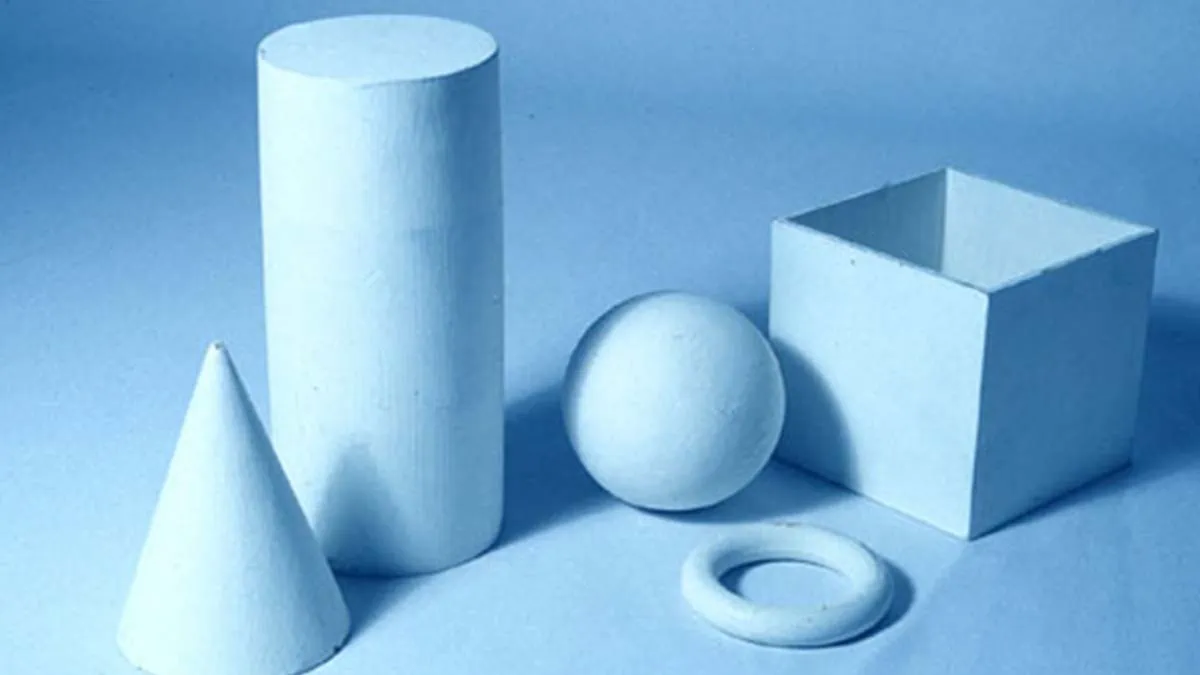
The picture shows a three-dimensional view of shapes such as:
- Squares seen as cubes or boxes
- Circles are observed as balls
- Or triangles as cones
Now you know how form is one of the seven elements of art.
5. Value in Art
What do you understand by the term “value?”
Can we say that value is something that increases the worth and importance of a certain object?
Of course, we can! That’s what value is as a whole.
The same goes for art. When we say value in art, that means something that is adding usefulness to the composition.
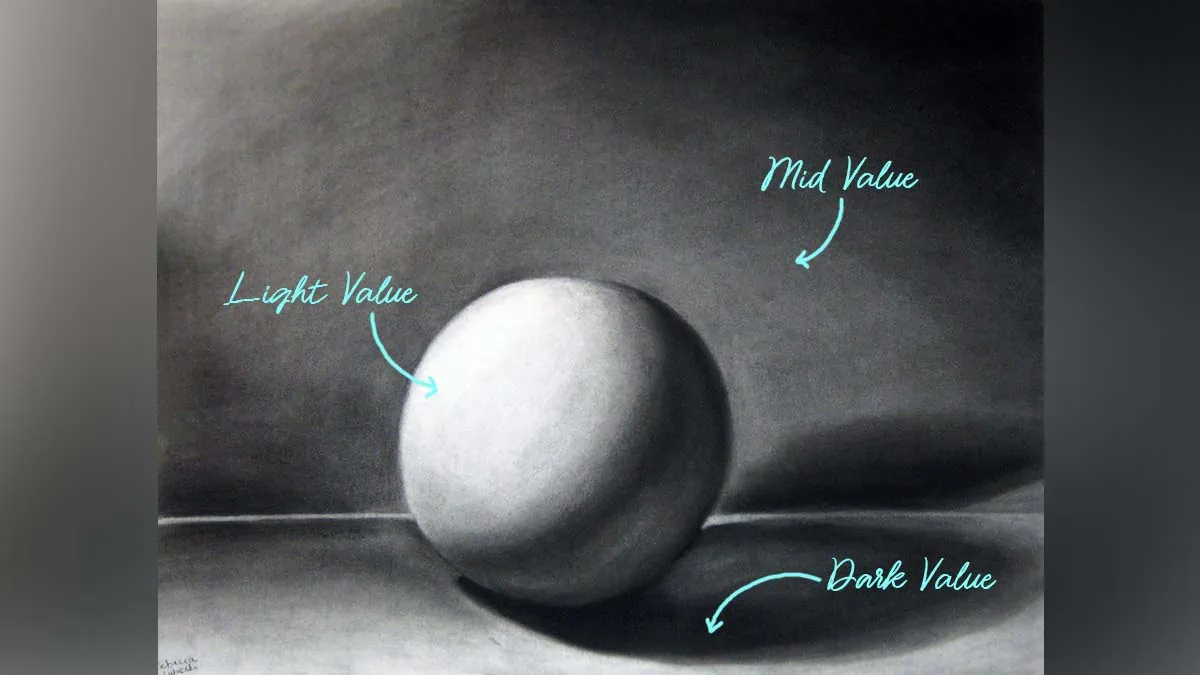
When you look at the painting above, there is a division of value. Each part is significant in building the whole subject.
It is the lightness or darkness of an object, which can be either monochromatic or colorful.
Value in art is the effect of light and shade that falls over the composition and enhances its worth.
6. Texture in Art

Can you sense both images you’ve witnessed above?
The first image gives a feeling of plastic texture, whereas the second picture feels like a concrete finish, right?
This is what we call texture in art.
Texture is how something would feel or look if you touched it.
It is broadly defined as the surface of artwork with elements of art.
During the Dutch Golden Age, still life paintings were mostly seen as real images, which was commonly known as “realism” or “naturalism.”
Albrecht Dürer is believed to capture the true essence of texture in his works.
For example, his “Young Hare” painting gives the most detailed texture to your eyes.

The way Albrecht has depicted Hare’s body, we can totally feel the furry texture.
Also, how can we forget the greatest artist of all time, “Jackson Pollock,” whose dripping technique is another perfect example of texture?
Pollock’s Autumn Rhythm (Number 30) creates a tactile texture that we can sense with the touch.
Learn how to paint like Jackson Pollock and incorporate various textures into your art.
7. Space in Art
Here we come to the last of the seven elements of art—space!
Space is an art element that reflects the emptiness of the object, which is both within and outside.
Let me give you a quick example.
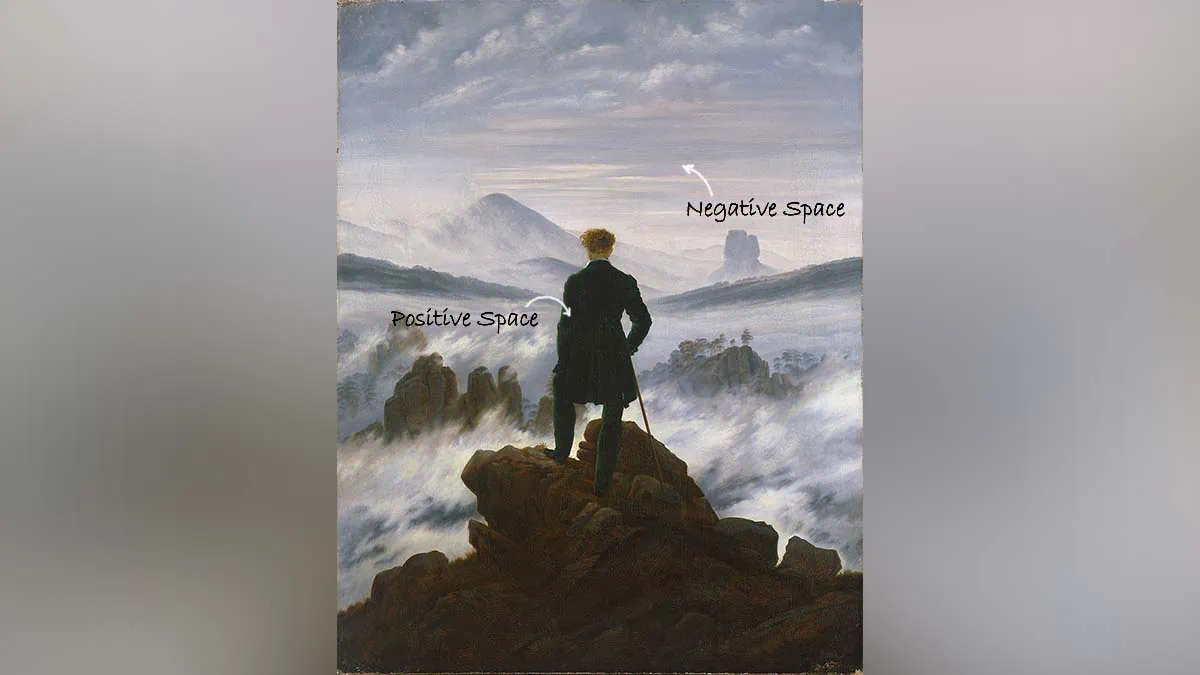
Caspar’s Wanderer above the Sea of Fog can be one of the masterpieces that show space in art.
You can see that there are two spaces—positive and negative.
Positive space is the area within the subjects present in the painting, whereas negative space refers to the background or the space outside the subject.
It brings depth to the art by making it two dimensional.
Summing up: Importance of Elements of Art
Now you know all the seven elements of art and their respective roles.
But do you know why these 7 art elements are significant?
The very first and most common reason could be that a person can’t create any sort of art without including at least one or two elements.
No element, no art—the end!
These elements in art speak about the artist’s thoughts, help us analyze what the piece wants to convey, and also give a unique perspective to each viewer.
Take a moment and look around yourself.
These art elements are not just limited to paintings; they can be found in every little thing.
It makes an object visually appealing and expressive.
The best part of having all elements in one is a handmade painting.
Do you wish to own one? Choose your medium by clicking on the link below!
How You Doing Readers
Learning about the seven elements of art was fun, wasn’t it?
I guess now, whenever our eyes lay on any art, we will know what we are looking at.
If you have any suggestions regarding the blog or questions to ask, please write them in the space below.
I would be glad to hear insights on this topic.
Happy reading, guys!
FAQs
There are seven elements of art: line, shape, color, form, value, texture, and space.
Elements of art are a significant part, as there would have been no painting, sculpture, or drawing without components of art included.

